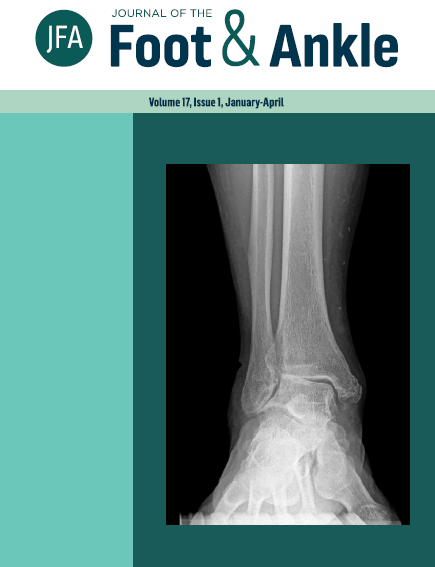Classification of foot type from podography: correlation of results between six quantitative assessment methods
DOI:
https://doi.org/10.30795/jfootankle.2023.v17.1690Keywords:
Evaluation; Foot; PodographyAbstract
Objective: Apply the different methods available in the literature to classify a sample of podography and evaluate the level of agreement between the results. Methods: Six quantitative and one qualitative method to classify foot type from podography were recorded on 30 feet. The podography indexes were calculated, and the level of agreement between methods was explored. Results: Correlation values were above r = 0.84 except for the test arch footprint angle. The highest correlation values were found between the truncated arch index and footprint index (0.99), arch index and footprint index (-0.94), and arch index and truncated arch index (-0.94), and the lowest was the arch footprint angle with the other parameters. However, there was a difference in the classification between the foot types, indicating a lack of agreement of thresholds between foot types. Qualitative visual inspection was the faster method to classify foot type.
Conclusion: The visual inspection was the fastest test to apply, followed by the quantitative arch footprint angle test. High correlation values were found between tests, especially the arch index and the footprint index, arch-length index, truncated arch index, and Chippaux-Smirak index tests. Level of Evidence IV; Therapeutic Studies; Case Series.
Downloads
Published
How to Cite
Issue
Section
License
Copyright (c) 2023 Journal of the Foot & Ankle

This work is licensed under a Creative Commons Attribution-NonCommercial 4.0 International License.







